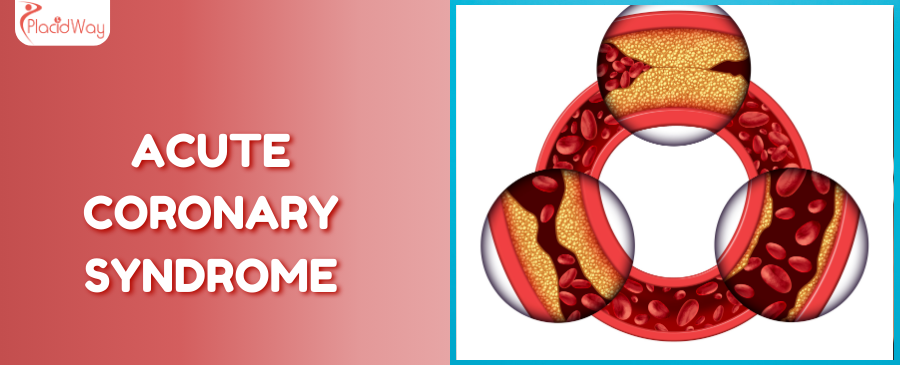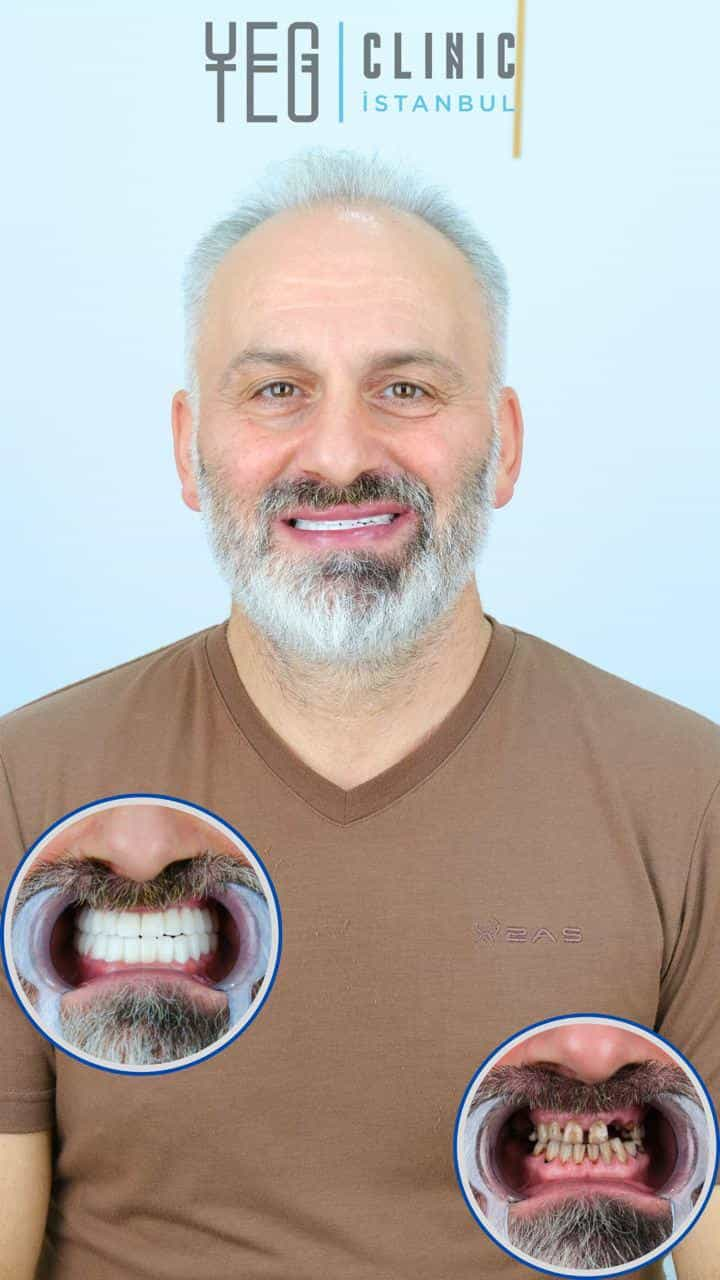
Urgent Heart Care: Navigating Acute Coronary Syndrome Treatment Abroad
Facing a diagnosis of Acute Coronary Syndrome (ACS) can be a terrifying and overwhelming experience. It’s a group of critical heart conditions, most notably heart attacks, where the blood flow to your heart muscle suddenly and severely diminishes. This urgent situation demands immediate medical attention to prevent permanent heart damage and save lives.
For many, particularly those seeking faster access to care, advanced treatments, or more affordable options, exploring Acute Coronary Syndrome treatment abroad has become a viable and often superior choice. Medical tourism offers a pathway to world-class cardiac specialists and state-of-the-art facilities, providing hope and healing beyond geographical borders.
This comprehensive guide aims to shed light on ACS, its symptoms, causes, and the critical treatments available, including options like angioplasty, stenting, and coronary artery bypass graft (CABG). We’ll also delve into why international patients consider traveling for these life-saving procedures, offering insights into recovery, risks, and a crucial worldwide cost comparison. Our goal is to empower you with the knowledge needed to make informed decisions about your heart health, whether at home or abroad.
What exactly is Acute Coronary Syndrome (ACS) and why is it urgent?
Acute Coronary Syndrome (ACS) isn't a single condition but rather an umbrella term for situations where the blood supply to the heart muscle is suddenly blocked or significantly reduced. Think of your heart as a garden, and your coronary arteries as the irrigation pipes. If one of these pipes gets severely clogged or blocked, the garden area it supplies starts to wither. In the heart, this "withering" can be a heart attack.
The spectrum of ACS includes:
- Unstable Angina (UA): This is chest pain that occurs at rest, is new, or is worse than previous angina. It signifies that your heart isn't getting enough blood flow, but there isn't permanent heart muscle damage yet. It's a critical warning sign.
- Non-ST-segment Elevation Myocardial Infarction (NSTEMI): Here, a partial blockage of a coronary artery causes some damage to the heart muscle, but it's not as extensive or immediately life-threatening as a full blockage.
- ST-segment Elevation Myocardial Infarction (STEMI): This is the most severe type of heart attack, caused by a complete and prolonged blockage of a coronary artery, leading to extensive heart muscle damage if not treated immediately.
The urgency stems from the fact that heart muscle tissue begins to die within minutes of being deprived of oxygen. The faster blood flow is restored, the more heart muscle can be saved, significantly improving outcomes and reducing the risk of long-term complications or sudden death.
What are the warning signs and symptoms of Acute Coronary Syndrome?
Recognizing the symptoms of ACS is crucial because every minute counts. While the classic "Hollywood heart attack" scenario involves crushing chest pain, symptoms can vary, especially for women, older adults, or those with diabetes.
Common symptoms include:
- Chest Pain or Discomfort: This is the most common symptom. It can feel like pressure, tightness, squeezing, aching, or a burning sensation. It might last more than a few minutes, or go away and come back. People often describe it as "an elephant sitting on my chest."
- Pain Radiating to Other Areas: Discomfort can spread to your left arm, but also to both arms, your back, neck, jaw, or stomach.
- Shortness of Breath (Dyspnea): You might feel like you can't catch your breath, with or without chest discomfort.
- Sweating: A cold sweat often accompanies chest pain.
- Nausea or Vomiting: Feeling sick to your stomach.
- Lightheadedness or Dizziness: A sudden feeling of faintness.
- Fatigue: Unusual or unexplained tiredness, especially in women.
If you or someone you know experiences these symptoms, particularly sudden chest discomfort, seek emergency medical help immediately. Do not wait to see if it improves.
What causes Acute Coronary Syndrome and who is at risk?
The vast majority of ACS cases are caused by atherosclerosis, a condition where fatty deposits (plaque) build up on the inner walls of your coronary arteries over time. Imagine rust accumulating inside a pipe – it narrows the passage.
Here’s how it usually happens:
- Plaque Buildup (Atherosclerosis): Over years, cholesterol and other substances form plaques in the arteries.
- Plaque Rupture: Sometimes, these plaques become unstable and rupture or crack.
- Blood Clot Formation (Thrombosis): Your body's natural response to a ruptured plaque is to form a blood clot (thrombus) to repair the "injury."
- Artery Blockage: This blood clot can suddenly and severely block the flow of blood through the artery, leading to ACS.
Several factors increase your risk of developing atherosclerosis and, consequently, ACS:
- High Blood Pressure: Damages artery walls, making them more susceptible to plaque buildup.
- High Cholesterol: Particularly high LDL ("bad") cholesterol contributes to plaque formation.
- Smoking: Nicotine and other chemicals damage artery walls and make blood more likely to clot.
- Diabetes: High blood sugar levels can damage blood vessels throughout the body.
- Obesity and Lack of Physical Activity: Contribute to high blood pressure, high cholesterol, and diabetes.
- Family History: If close relatives had heart disease at an early age, your risk is higher.
- Age: Risk increases with age, typically after 45 for men and 55 for women.
While some risks like age and genetics aren't modifiable, many can be managed through lifestyle changes and medication.
What are the main treatments and procedures for Acute Coronary Syndrome?
The primary goal of ACS treatment is to quickly restore blood flow to the heart muscle. This can involve a combination of medications and interventional procedures:
Emergency Medications:
- Antiplatelet Drugs (e.g., Aspirin, Clopidogrel): Prevent blood clots from forming or getting larger.
- Anticoagulants (e.g., Heparin): Help thin the blood to prevent new clots.
- Thrombolytics (Clot Busters): In some cases, these drugs can dissolve a blood clot blocking an artery.
- Nitroglycerin: Widens blood vessels, improving blood flow and reducing chest pain.
- Beta-blockers: Slow the heart rate and reduce blood pressure, easing the heart's workload.
Interventional Procedures:
- Percutaneous Coronary Intervention (PCI) / Angioplasty with Stenting: This is a common and often preferred emergency treatment. A catheter with a balloon is guided to the blocked artery, the balloon is inflated to open the blockage, and a small mesh tube (stent) is typically left in place to keep the artery open. This is like clearing a clogged drain and inserting a reinforcing sleeve.
- Coronary Artery Bypass Graft (CABG) Surgery: Often referred to as "bypass surgery" or "open-heart surgery." If multiple arteries are severely blocked, or if blockages are complex and not suitable for PCI, surgeons may create new pathways (bypasses) for blood to flow around the blockages, using healthy blood vessels from other parts of your body.
The choice of treatment depends on the type of ACS, the location and severity of the blockage, the patient's overall health, and the time elapsed since symptoms began.
Who is eligible for Acute Coronary Syndrome treatments abroad?
Generally, anyone diagnosed with Acute Coronary Syndrome requires immediate medical attention and treatment. Eligibility for a specific procedure like angioplasty (PCI) or bypass surgery (CABG) is determined by a thorough cardiac assessment, including:
- Diagnosis Confirmation: ECG (electrocardiogram), blood tests (cardiac enzymes), and imaging studies confirm the type and extent of ACS.
- Coronary Angiography: This invasive procedure uses X-rays and dye to visualize the coronary arteries, showing the exact location and severity of blockages. This is critical for deciding between PCI and CABG.
- Overall Health Status: Doctors assess your general health, including kidney function, lung function, and any other chronic conditions (like diabetes, stroke history) that might influence the choice of procedure or recovery.
- Severity of Blockage: Single vs. multiple vessel disease, the complexity of lesions, and the health of the heart muscle itself guide treatment decisions.
When considering treatment abroad, patients are typically asked to provide their full medical records, including diagnostic reports, previous treatments, and current medications. This allows the international medical team to evaluate your case and determine the most appropriate course of action, often providing a valuable second opinion. Stable patients, or those requiring elective bypass surgery following initial emergency stabilization at home, are generally the best candidates for medical travel.
What should I expect during recovery from ACS treatment?
Recovery from ACS treatment is a multi-stage process focusing on healing, strengthening the heart, and preventing future cardiac events. The specific timeline varies depending on the treatment received:
- Hospital Stay:
- After PCI (Angioplasty/Stenting): Typically 1-3 days, mainly for observation and to ensure the stent is stable.
- After CABG (Bypass Surgery): Usually 5-7 days, including time in the intensive care unit (ICU) and then a regular ward.
- Initial Home Recovery (Weeks 1-4):
- Pain Management: Mild pain or discomfort, especially after CABG (sternal incision), is common and managed with medication.
- Activity Restrictions: Gradual increase in activity is advised. Heavy lifting or strenuous activities are restricted for several weeks, particularly after CABG.
- Wound Care: Keeping incision sites clean and dry to prevent infection.
- Cardiac Rehabilitation (Beyond 4 Weeks):
- This is a crucial supervised program combining exercise training, education on heart-healthy living (diet, stress management), and counseling. It helps strengthen your heart, improve fitness, and reduce the risk of future problems.
- Long-term Lifestyle Changes:
- Medication Adherence: Taking prescribed medications (antiplatelets, cholesterol-lowering drugs, blood pressure medications) exactly as directed for life is vital.
- Diet: Adopting a heart-healthy diet (low in saturated/trans fats, sodium, and added sugars; rich in fruits, vegetables, whole grains).
- Exercise: Regular physical activity as advised by your doctor and cardiac rehab team.
- Smoking Cessation: Quitting smoking is paramount.
- Stress Management: Finding healthy ways to cope with stress.
Recovery is a journey, not a destination, and active participation in your care plan is essential for optimal long-term heart health.
What are the potential risks and side effects of ACS procedures?
While interventional procedures for ACS are often life-saving, like any medical intervention, they carry potential risks and side effects. Your medical team will thoroughly discuss these with you before any procedure.
Risks associated with Percutaneous Coronary Intervention (PCI) / Angioplasty with Stenting:
- Bleeding or Bruising at the Catheter Insertion Site: Usually in the wrist or groin.
- Allergic Reaction: To the contrast dye used during the procedure.
- Kidney Damage: From the contrast dye, especially in those with pre-existing kidney issues.
- Restenosis: The treated artery narrowing again (less common with drug-eluting stents).
- Stent Thrombosis: A blood clot forming within the stent, which can cause another heart attack; prevented by antiplatelet medications.
- Heart Attack or Stroke: Though rare, complications can include these.
- Arrhythmias: Irregular heartbeats.
Risks associated with Coronary Artery Bypass Graft (CABG) Surgery:
- Bleeding: More significant than with PCI, requiring blood transfusions.
- Infection: At the incision sites (chest, leg/arm where graft was taken).
- Stroke: A more significant risk than with PCI, especially in older patients or those with existing cerebrovascular disease.
- Heart Attack: Can occur during or after surgery.
- Kidney Problems.
- Lung Problems.
- Cognitive Changes: Temporary memory issues or difficulty concentrating (often resolves).
- Graft Failure: The bypass graft can become narrowed or blocked over time.
It's important to remember that these procedures are performed because the benefits of restoring blood flow to your heart muscle typically far outweigh these potential risks, especially in an emergency situation.
How much does Acute Coronary Syndrome treatment cost worldwide? (Cost Comparison Table)
The financial burden of Acute Coronary Syndrome treatment can be substantial, particularly in countries with high healthcare costs. This is one of the primary drivers for patients exploring medical tourism options. The cost can fluctuate widely based on the procedure (PCI vs. CABG), number of stents/grafts, hospital stay duration, country, and the specific facility.
| Country | PCI (Angioplasty with Stent) | CABG (Bypass Surgery) |
|---|---|---|
| United States | $20,000 - $60,000+ | $70,000 - $200,000+ |
| United Kingdom (Private) | $15,000 - $35,000 | $40,000 - $80,000 |
| India | $3,000 - $10,000 | $5,000 - $15,000 |
| Mexico | $8,000 - $18,000 | $15,000 - $30,000 |
| Turkey | $7,000 - $15,000 | $12,000 - $25,000 |
| Thailand | $10,000 - $20,000 | $20,000 - $45,000 |
| South Korea | $12,000 - $25,000 | $25,000 - $50,000 |
*Please Note: These are estimated costs and can vary significantly based on individual patient needs, specific hospital, surgeon fees, length of stay, and complications. Always request a personalized quote. Costs typically include hospital stay, surgeon fees, and basic medications but may not cover travel, accommodation, or extensive post-operative rehab.
Why should I consider traveling abroad for Acute Coronary Syndrome treatment?
For individuals facing ACS, the decision to seek treatment abroad is often driven by a combination of compelling factors:
- Significant Cost Savings: As seen in the table above, the cost of life-saving cardiac procedures can be dramatically lower in popular medical tourism destinations compared to Western countries. This makes high-quality treatment accessible to those who might otherwise face financial hardship or inability to afford care.
- Reduced Waiting Times: In many countries, public healthcare systems can have long waiting lists for elective, non-emergency cardiac procedures. Traveling abroad can mean receiving timely treatment, which is crucial for preventing further heart damage or complications.
- Access to Advanced Technology and Expertise: Leading medical tourism hubs invest heavily in state-of-the-art medical equipment and attract highly qualified, internationally trained cardiac surgeons and cardiologists. Many facilities boast technologies and treatment protocols on par with, or even surpassing, those found in developed nations.
- World-Renowned Specialists: Patients can often access specialized doctors with extensive experience in complex cardiac cases, who are leaders in their field.
- Privacy and Discretion: Some patients prefer the anonymity and privacy offered by receiving treatment in a foreign country.
- Comprehensive Packages: Many international hospitals and medical tourism facilitators offer all-inclusive packages that cover treatment, accommodation, airport transfers, and interpreter services, simplifying the patient journey.
Ultimately, the choice to travel abroad for ACS treatment is a deeply personal one, weighing the benefits of cost and access against the logistics of international travel during a critical health period.
How can I ensure safety and quality when seeking ACS treatment overseas?
Ensuring safety and quality is paramount when considering any medical procedure, especially critical heart care, abroad. Here are key steps to take:
- Choose Internationally Accredited Hospitals: Look for hospitals with international accreditations like the Joint Commission International (JCI) or similar globally recognized standards. This signifies adherence to rigorous quality and patient safety protocols.
- Research Surgeon Credentials and Experience: Verify the cardiac surgeon's qualifications, board certifications, experience with your specific procedure, and patient outcomes. Many top international doctors have trained or practiced in Western countries.
- Utilize Reputable Medical Tourism Facilitators: Companies like PlacidWay specialize in connecting patients with vetted hospitals and doctors worldwide. They can help with vetting facilities, arranging logistics, providing quotes, and ensuring clear communication.
- Request Comprehensive Treatment Plans and Quotes: Ensure you receive a detailed breakdown of the proposed treatment, including all associated costs, duration of stay, and what is included in the package.
- Understand Pre- and Post-Operative Care: Clarify the post-procedure follow-up plan, including medication, rehabilitation, and how ongoing care will be managed upon your return home.
- Communicate Clearly: Ensure there are clear communication channels and, if necessary, professional medical interpreters available throughout your journey.
- Read Patient Testimonials and Reviews: While not the sole factor, real patient experiences can offer valuable insights into the quality of care and overall experience at a particular facility.
Diligent research and leveraging expert guidance from reputable facilitators can significantly mitigate risks and enhance the safety and success of your medical journey abroad.
Take the Next Step with PlacidWay
Ready to explore treatment options abroad? Discover top clinics, compare prices, and get a free quote tailored to your needs with PlacidWay.
Heart Surgery Abroad, Cardiac Care Abroad










Share this listing